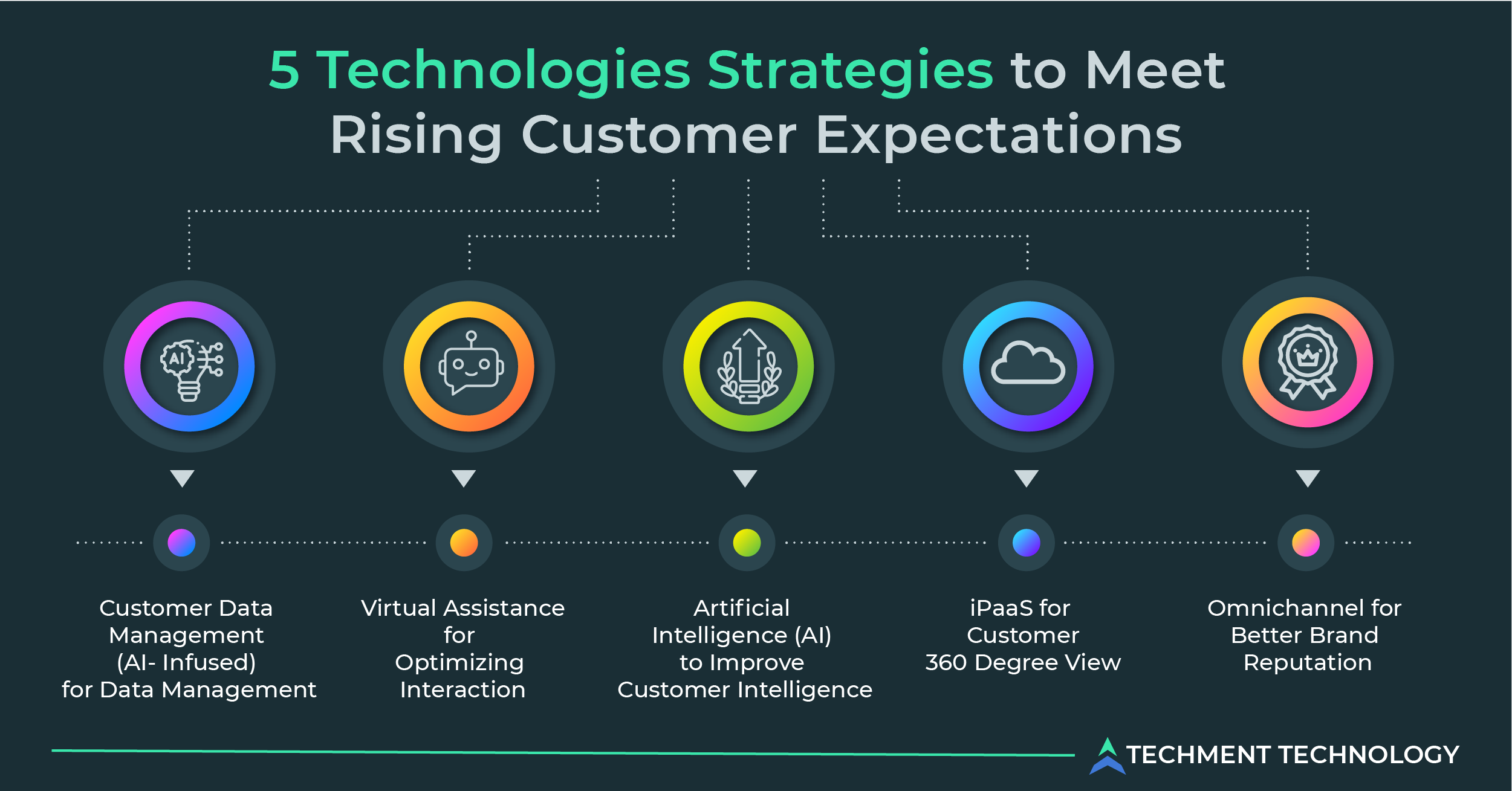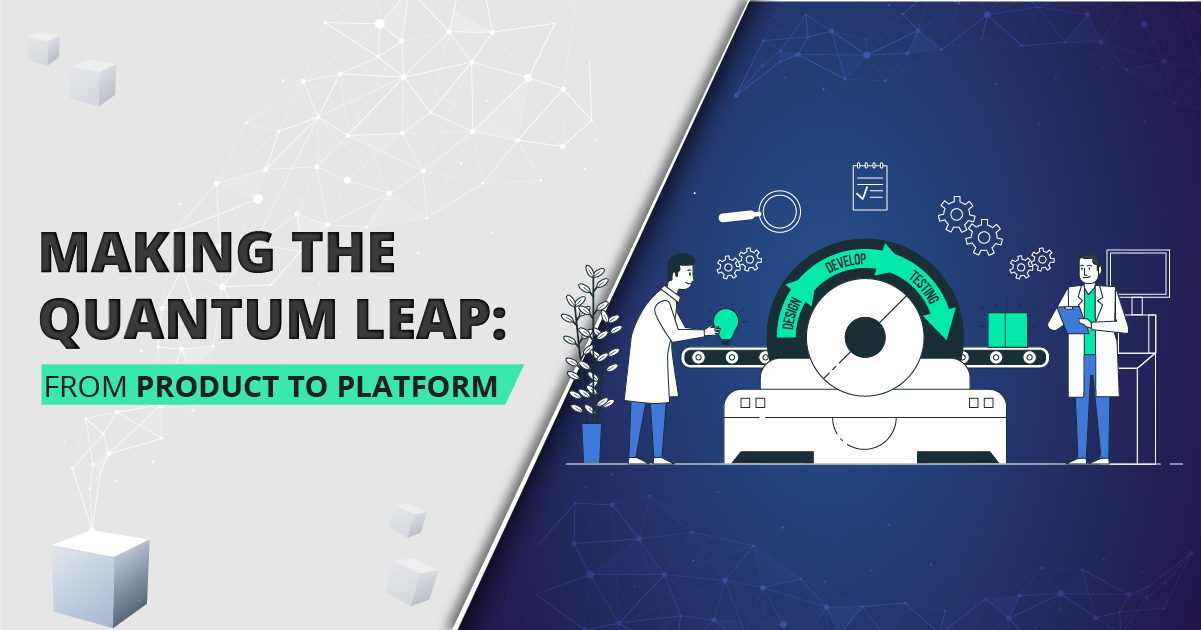The important parameter of measuring the company’s success is always centered on customer experience but the significance has grown post-crisis as it shifted the customer expectation and standards for which services were being provided. The bar of customer expectations grew and the challenge of meeting them has left leaders to ponder on what new strategies and technologies can be embedded in an organization’s ecosystem.
The customer experience (CX) refers to all the stages of a buyer’s journey which encompasses pre-purchase, purchase, and post-purchase. In today’s digital environment a deep understanding of how customers may engage with your product, their usage pattern, their choice of engagement channel, etc. provides the holistic perspective of improving customer experience.
Expectations are changing every day as technology continues to deliver information that is more timely and relevant to customers’ conditions. Companies are collecting information that can be used to optimize, refine, and simplify customer experiences. At present artificial intelligence (AI) has brought a shift in customer engagement. AI understands unstructured information in the way humans do, but they do learn from interactions. Since such systems can learn like humans, customer experience has entered into a new era i.e., creating AI-powered experiences that feel like natural human engagement.
5 Technologies Strategies to Meet Rising Customer Expectations

1. Customer Data Management (AI- Infused) for Data Management: Getting customer data isn’t a big deal but organizing, accessing when needed, and uncovering the trending insights still needs clarification on technical grounds. The first principle step to strengthen data management is data governance which will guide what data will be collected. A new solution approaching these days is “AI-infused hybrid data management” which provides the advantages of modernized information architecture to make data collection and management simpler and smarter with automation containerization built on the open platform.
IBM Hybrid Data Management Platform started providing the above solution that enables to collect and provide business insight data sources.
2. Virtual Assistance for Optimizing Interaction: Companies are more inclined towards virtual assistance for optimizing interaction through virtual assistance like artificial intelligence (AI) and NLP (Natural Language Processing) and boosting its digital capacity and self-service capabilities to serve customers. NLP drives conversational agents and enables contextual understanding to provide personalized service to customers.
NLP is increasingly becoming popular for operationalizing data. Artificial intelligence software with NLP capabilities makes data entry and searches more reliable and efficient.
3. Artificial Intelligence (AI) to Improve Customer Intelligence: Customer support and digital experiences are constantly evolving with predictive analytics enabled by artificial intelligence which helps organizations to make real-time decisions, based on what’s best for individual customers.
Customer intelligence is data that provides you with the insights necessary to improve key business metrics such as revenue, retention, acquisition, churn, repeat purchase, and many others.
When it comes to customer information three terms are often confused with and demystifying them would help to apply appropriate technology to it.
| Customer Information | What it is? | What it does? |
| Customer Data | Customer information in raw form. e.g., information about a single purchase | Doesn’t tell about customer behavior |
| Customer Intelligence | The outcome of customer data analysis informs about each customer or group of customers. | Enables businesses to meet their customers’ needs and grow profitably. |
| Customer Insight | Actionable information or output from further analyzing customer intelligence | Clarifies “Why” behind customer behavior and ultimately drives business action. |
4. iPaaS for Customer 360 Degree View: Customer 360 refers to a 360-degree view of a customer’s data including every interaction, from a website inquiry to a product purchase to a customer support ticket. This confirms that every group in the company has access to the same version of the truth about the customer.
For 360-degree view data silos and disparate applications becomes challenging and lack of consistent data across systems makes integration more difficult. Integration Platform as a Service (iPaaS) solutions are capable of integrating data, applications, and APIs. Modern iPaaS solutions are built on the cloud and used for application integration, data integration, B2B ecosystem integration, multi-experience support, and IoT scenarios.
- iPaaS provides easy-to-use integrations to take control of the customer data from various internal and external sources. You can use pre-built business connectors that are compatible with your integration scenario of choice to make sure that no data goes unused.
- iPaaS provides a holistic view of your customer preferences and tells what your customers need to have for a more fulfilling experience every time they connect with your brand.
5. Omnichannel for Better Brand Reputation: The omnichannel approach to customer experience (CX) has become an essential investment for companies. This means delivering a unified experience across all the channels and platforms that consumers use to interact with the brands. Companies promote the same brand messaging to protect customer relations on multiple platforms. Right place and right time engagement make a difference whether customers choose you or competitors.
Technological Partnership for Better Planning and Execution: By working with the right IT partner, a business can move to a more holistic approach to access better technology and customer data. CX technology with integration and implementation can help ensure that products are actually put to use and that they work effectively together.
With the rise in flexible consumption and rising CX, the essential KPIs like resell, upsell and cross-sell deals, and customer experience must be tracked for approaching in the right direction. As partners’ role expands and business models evolve from transactional to service-oriented.
With all the above technologies and strategies to improve customer experience make sure not to slow down in the process and maintain the customer experience from start to finish. This will be vital for business value and throughput.
CX Becomes a Differentiator with Seamless Human-Digital Interaction
The technologies behind customer experience have developed significantly over the past decade. There have been advancements in cloud technologies, web standards, digital communication channels, and smartphone capabilities. This often requires integration with legacy systems, website and mobile app development, and cloud technologies.
CX covers almost every aspect of IT assets, the integration, and interoperability of a business are critical to ensure the end-to-end customer journey. Data management plays a key role in improving the customer experience. By applying analytics to customer data and online consumer behavior, businesses can better target promotions and improve products.
Ultimately, the future of CX will depend on the willingness of industries to embrace new customer experiences, rather than just reacting to market changes, and those who do not improve their CX risk are likely to be left behind.
For partnership to improve customer experience through technological approach or develop a solution for same, Techment technology serves as a partner and as solution provider and to know more, get free consultation.
 All Posts
All Posts
